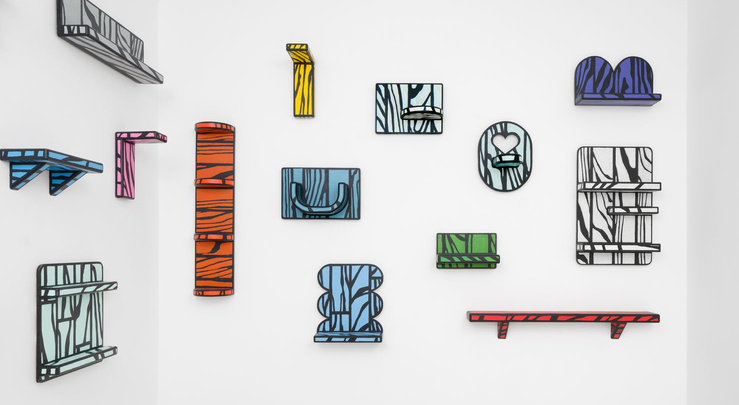
Richard Woods — Semiose, Paris
At the Semiose gallery, Richard Woods plays with contrast and materiality, guiding us through shifting layers of reality. Celebrating the simplicity — even the rusticity — of an artistic practice that merges pleasure and utility, Woods presents a thoroughly seductive display, one that subverts creative conventions and leaves us stunned before the birth of a world we might well choose to inhabit. Colors, textures, patterns: everything speaks to us, everything projects us elsewhere.
Woods is generally appreciated for the way he subverts normalcy by erecting architectural forms — cabins, houses, interiors, swimming pools — that borrow their aesthetic codes from illustration. He inscribes within the subtle gradations of reality a vivid affirmation of the imaginary, a whimsical reduction bordering on slapstick. Beyond the acknowledged influence of Franz West, how not to think of the quirky detour of Roger Hargreaves, or the radical essentialism of Dubuffet? His use of the white cube at Semiose is once again remarkably inventive: it accumulates forms and signs within the space to conjure a living landscape. A landscape not limited to mere display, but seemingly intended to prolong its own existence. For building a shelf is, above all, for Woods, the beginning of a dialogue — with whoever adopts it, with the space it will inhabit, and with the function (if any) it might serve.
In this, Woods once again unfolds an art of radicality and generosity, a deep reflection on the value of the object, the artwork, and labor itself — one that never loses sight of the interpretive range they invite. He encompasses their full spectrum of function, from the most mundane to the most contemplative, offering in this way their most complete synthesis.
There is, in his gesture, a way of opening a fracture in the world without imposing an order — a politeness of vertigo, one might say. This absolute difference creates a rupture with its surroundings but in no way rejects them; it coexists — gaping, disarming — slipping, as Woods himself suggests, a friendly “hello” to the world that will receive it.
Like the wall facing Bartleby’s desk in Herman Melville’s short story, Woods’ shelves act as a screen — obscuring the richness of the real while imprinting it with a pattern that defies material logic. It proposes, instead, an escape through the gaze, an interior — and fertile — imbalance.









